- Home
- TV History
- Network Studios History
- Cameras
- Archives
- Viewseum
- About / Comments
Skip to content
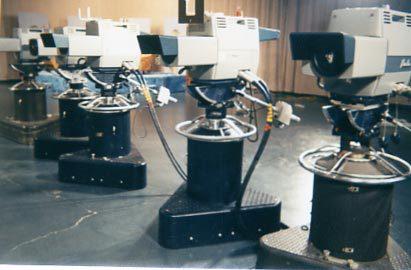



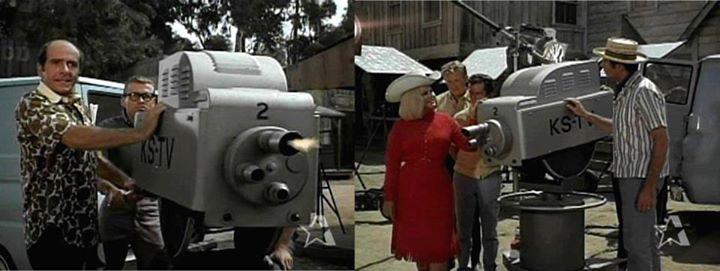

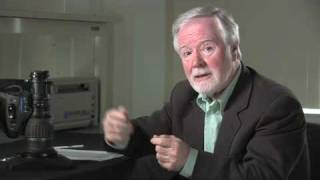

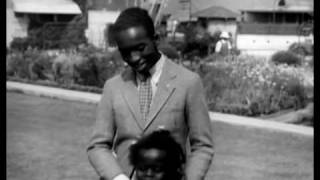







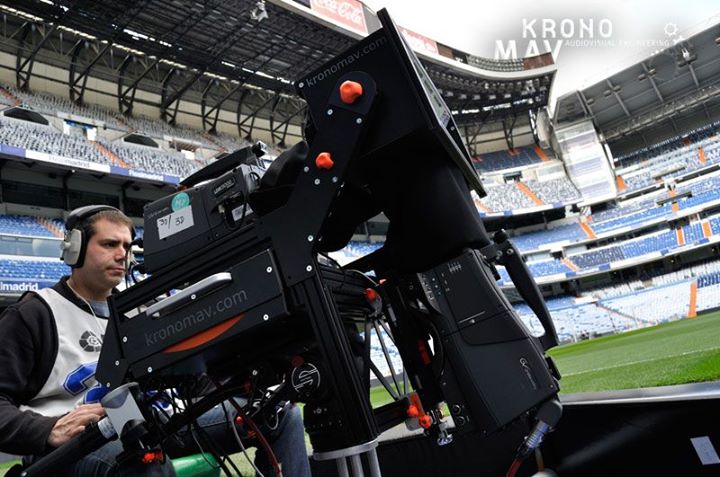

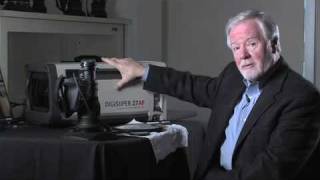



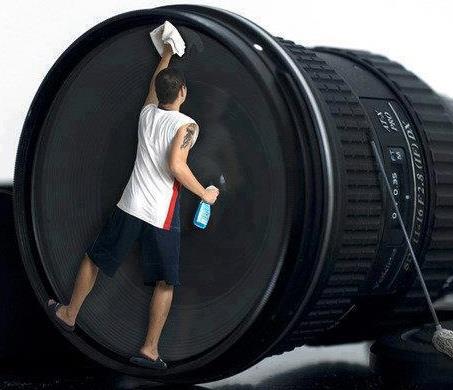

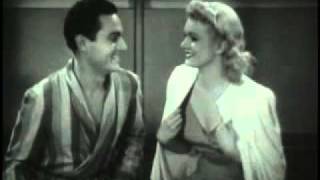



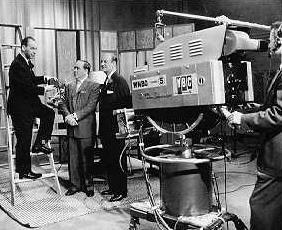





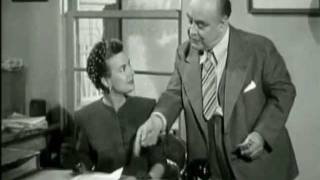



Posts in Category: TV History
Page 116 of 136
« Previous
1
2
3
4
5
6
7
8
9
10
11
12
13
14
15
16
17
18
19
20
21
22
23
24
25
26
27
28
29
30
31
32
33
34
35
36
37
38
39
40
41
42
43
44
45
46
47
48
49
50
51
52
53
54
55
56
57
58
59
60
61
62
63
64
65
66
67
68
69
70
71
72
73
74
75
76
77
78
79
80
81
82
83
84
85
86
87
88
89
90
91
92
93
94
95
96
97
98
99
100
101
102
103
104
105
106
107
108
109
110
111
112
113
114
115
116
117
118
119
120
121
122
123
124
125
126
127
128
129
130
131
132
133
134
135
136
Next » Color Comes To Atlanta…1965
On April 6, 2013
- TV History
Color Comes To Atlanta…1965
This is five of the six Norelco PC60s that arrived at WAGA (then CBS) in late 1966 which replaced their Marconi Mark IVs. WSB (then NBC) was first with local color in 65 and had the RCA TK42s, but by 69, they too went to the Norelcos. Before color, WSB had TK60s. WXIA (then WAII and ABC) bought TK42s in 66 replacing their RCA TK11s. When I was in college at The University Of Georgia, we used the TK60s and TK42s WSB had donated in 1970.
TV Lens Week…Post 5: Digi Super 100 Auto Focus
On April 5, 2013
- TV History
TV Lens Week…Post 5: Digi Super 100 Auto Focus
Gordon Tubbs explains how auto focus works and ‘the permissible circle of confusion’ optical theory, which is quite fascinating. Enjoy!
https://www.youtube.com/watch?v=JelbzQpKr4E
Canon’s Broadcast and Communications Division premiers their new HD field lens with Auto focus the DIGISUPER 100 HDTV at NAB 2008 Las Vegas.
This TK41 Is A Killer! And, An MGM Prop
On April 4, 2013
- TV History
This TK41 Is A Killer!
About 10 days ago, I posted a TK41 from MGM’s prop department asking you if it was “Live Or Memorex”. Thanks to our friend Mike Clark, we can see that camera in action shooting more than just pictures! For an episode of ‘The Girl From U.N.C.L.E,’ guest star Peggy Lee plays a villain who has a TK41 modified into a machine gun (turret?) to be used against U.N.C.L.E. agents April Dancer and Mark Slate.
TV Lens Week…Post 4: SD and HD Lens Comparison
On April 3, 2013
- TV History
TV Lens Week…Post 4: SD and HD Lens Comparison
https://www.youtube.com/watch?v=4MrC9Hgzdhw
Larry Thorpe of Canon discusses putting standard definition lenses on high definition cameras. http://www.hdcameraguide.com
First Meeting: Our Gang and Little Rascals Casts…1936
On April 2, 2013
- TV History
First Meeting: Our Gang and Little Rascals Casts…1936
Next week, I will be posting a 10 part special on the ‘Our Gang’ and ‘Little Rascals’, but to get you in the mood, here is a two minute clip of the meeting of the 1921 and 1936 casts of the show. Enjoy!
http://www.youtube.com/watch?v=f1aHri6Vtr0
Little Rascals Our Gang
Double Header: 40 Inch Lens and The Edison Effect
On April 2, 2013
- TV History
Double Header: 40 Inch Lens and The Edison Effect
Last week this photo was posted by Pierre Seguin and comes from a 1947 edition of Popular Mechanics. It shows a 1945 RCA Orthicon camera with a 40 inch lens, described as the longest ever used at the time. It also mentions that television works only with the help of the Edison Effect…a discovery by Edison that led to the invention of the vacuum tube by James Fleming.
The “Edison effect” was the name given to a phenomenon that Edison observed in 1875 and refined later, in 1883, while he was trying to improve his new incandescent lamp. The effect was that, in a vacuum, electrons flow from a heated element — like an incandescent lamp filament — to a cooler metal plate. Edison saw no special value in the effect, but he patented it anyway. Edison patented everything in sight. Today we call the effect by the more descriptive term, “thermionic emission.”
Now the Edison effect has an interesting feature. The electrons can flow only one way — from the hot element to the cool plate, but never the other way — just like the water flow through a check valve. Today we call devices that let electricity flow only one way, diodes.
In 1904, the Edison effect was finally put to use, but not in a light bulb. Radio was in its infancy, and the British physicist John Fleming was working for the British “Wireless Telegraphy” Company. He faced the problem of converting a weak alternating current into a direct current that could actuate a meter or a telephone receiver. Fortunately, Fleming had previously consulted for the Edison & Swan Electric Light Company of London. The connection suddenly clicked in his mind, and he later wrote,
“To my delight I … found that we had, in this peculiar kind of electric lamp, a solution!” Fleming realized that an Edison-effect lamp would convert alternating current to a direct current because it let the electricity flow only one way. Fleming, in other words, invented the first vacuum tube. Of course, most vacuum tubes have been replaced with solid-state transistors today; but they haven’t vanished entirely. They still survive, in modified forms, in things like television picture tubes and X-ray sources.
TV Lens Week…Post 4: Modulated Transfer Function…
On April 2, 2013
- TV History
TV Lens Week…Post 4: Modulated Transfer Function…MTF
Canon’s Larry Thorpe explains MTF and why it is important.
https://www.youtube.com/watch?v=R73lgtHEIr0
Larry Thorpe of Canon discusses MTF. http://www.hdcameraguide.com


In Honor Of Baseball’s Opening Day! The classic, “Who’s On First” routine
On April 1, 2013
- TV History
In Honor Of Baseball’s Opening Day!
The classic, “Who’s On First” routine from Abbot & Costello.
http://www.youtube.com/watch?v=airT-m9LcoY
a funny monolog between Abbot And costello abou abbots baseball team.
3D Rigs…A Relic Already?
On April 1, 2013
- TV History
3D Rigs…A Relic Already? PLEASE HELP US FILL IN THE BLANKS!
I got an email from our friend Chuck Pharis last night that said all the 3D trucks at ESPN are gone now. It seems that an engineer in India has come up with a box that converts any HD signal into 3D! I hope this is not an April Fool’s joke on me, but, if anyone heard about this, please let us know by adding a comment below. Thanks!
TV Lens Week…Post 3: Studio Box Lens vs ENG/EFP Lens
On April 1, 2013
- TV History
TV Lens Week…Post 3: Studio Box Lens vs ENG/EFP Lens
Canon’s Larry Thorpe explains the differences and who better? Before joining Canon, Larry was an engineer who built cameras at the BBC, then RCA where he worked on the TK42 and 44 and later went to Sony to help in the development of their studio cameras, starting with the BVP 360.
https://www.youtube.com/watch?v=-BUmmWXL1xM
Larry Thorpe of Canon discusses the differences between studio “box” lenses and portable lenses in this informative series. http://www.hdcameraguide.com


TV Lens Week…Post 2: The Pickle Barrel Lens
On March 31, 2013
- TV History
TV Lens Week…Post 2: The Pickle Barrel Lens
In the photo below, you see a sports event from the late 1940s or early ’50s being covered by a couple of RCA TK30s with zoom lenses. The long lens is a 27 element Zoomar Field Lens. The other camera is equipped with periscope type reflector lens, possibly from Rank, Taylor, Hobson. Due to it’s shape and size, it was commonly referred to as ‘the pickle barrel’ lens.
TV Lens Week…Post 1: The Amazingly High Cost Of Lenses!
On March 31, 2013
- TV History
TV Lens Week…Post 1: The Amazingly High Cost Of Lenses!
At the link under this text, you’ll see the retail price for Canon’s Digi Super lenses from B&H in New York. Prices range from a low of about $75,000 to over $153,000 for Canon’s top of the line HD box lenses. I’m pretty sure the lenses are available from Canon at a lower price, but as you know, most manufacturers don’t post their prices lists. The zoom and focus demands on page 2 are around $3,800 each! More to come!
Inside The Iconoscope & One Of The First Orthicon Cameras
On March 29, 2013
- TV History, Viewseum
Inside The Iconoscope & One Of The First Orthicon Cameras
Revised from the earlier post: In 1941, TV was still quite a novelty, as this clip portrays. At 1:27 in this RCA film “Magic In The Air”, you get a look at one of the first RCA Orthicon cameras and the first ever mobile unit. At 4:22, you get a look inside an RCA 500A Iconoscope camera. Most interesting of all to me is the 7:15 section where the RCA Orthicon camera is put together at the ballpark. The lower half, with the tube, is mounted first and the optical (not electronic) viewfinder is added next. The viewfinder has it’s own lens (matching the taking lens on the bottom element) and is not showing the cameraman the actual image from the Orthicon tube. Seeing the actual tube output will finally come in 1946 when the RCA TK30 Image Orthicon camera is introduced.
Pye Experimental Color Camera; Field Sequential System
On March 27, 2013
- TV History
Pye Experimental Color Camera; Field Sequential System
In the US, the color system battle ended in December of 1953 with the FCC adapting the RCA ‘Dot Sequential’ system over the CBS ‘Field Sequential’ system, but in the UK, this was not settled. This camera is basically a Pye Mark III – 84 – 2014 black and white camera with a color wheel mounted behind the bottom left lens. The hump on top is the housing for the motor that spins the color wheel. The rotation of the wheel was synchronized to the field period of the camera so that, red, green & blue images were presented in succession to the tube which would have been a standard 3 inch Image Orthicon type. The photo is believed to be from around 1954 and is courtesy of Brian Summer’s great site, http://www.tvcameramuseum.org.
April 15, 1956: The Day Color TV Came To Chicago
On March 26, 2013
- TV History
April 15, 1956: The Day Color TV Came To Chicago
http://www.richsamuels.com/nbcmm/1968/fadeup2.html
The link above will take you to Rich Samuel’s great site that covers Chicago broadcast history from stem to stern. The linked page is about WMAQ’s conversion to color. I wish more cities had broadcast historians like Mr. Samuels. Enjoy the site!
RCA Catalog 1964 With Prices
On March 25, 2013
- TV History
RCA Catalog 1964 With Prices
This even includes the price of the TK41C.
This will be an education in more than one way as you learn just how much inflation has crept into our economy thanks to the relentless printing of money by the Federal Reserve Bank. In today’s dollars, the TK60 chain would cost $154,423.17 instead of the $21,500 it sold for in 1964. An RCA TK41 chain would cost $412,992.21 today instead of the $57,500 it cost in 1964. I hope you will share these and this page with friend! Enjoy!


Wizard Of Oz – Behind The Scenes
On March 24, 2013
- TV History
Wizard Of Oz – Behind The Scenes
http://www.youtube.com/watch?v=vKcxX6beKl0
When the ‘Wizard of Oz’ had it’s last network broadcast on CBS (May 8th, 1998), the bumpers around the commercial breaks had interesting behind the scenes tr…


Yet Another Disappearing TV Camera!
On March 24, 2013
- TV History
Yet Another Disappearing TV Camera!
In this 1984 video, UK magician Paul Daniels makes a Link 125 studio camera vanish! Enjoy!
http://www.youtube.com/watch?v=8cCXBCD6Ols
On a 1984 edition of his magic show, Paul Daniels makes a Link 125 camera disappear.


Meet ‘I Love Lucy’s’ Summer Replacement! ‘My Little Margie’
On March 23, 2013
- TV History
Meet ‘I Love Lucy’s’ Summer Replacement! ‘My Little Margie’
Remember this show’s theme song? I do, and you can hear it again and see a full episode of ‘My Little Margie’ here, starring Gail Storm and Charles Farrell. This is episode six of season two and first aired on 10/25/52.
‘My Little Margie’ premiered on CBS as the summer replacement for I Love Lucy on June 16, 1952, under the sponsorship of Philip Morris cigarettes (when the series moved to NBC for its third season in the fall of 1953, Scott Paper Company became its sponsor). In an unusual move, the series—with the same leads—aired original episodes on CBS Radio, concurrently with the TV broadcasts, from December 1952 through August 1955. As usual, this episode ends with the same line her dad, Vern Albright used at the end of each show…”Well, that’s my little Margie”.
http://www.youtube.com/watch?v=uP3NpF_p3rI
Because that’s when the syndicated edition of the series was prepared; as previously mentioned, the original closing credits were seen with a Philip Morris pack in the background…they had to be refilmed, along with the credits seen during the 1953-’55 Scott Paper sponsorship {a box of Scotties on…
You Mean There Were Art Departments? Yes!
On March 23, 2013
- TV History
You Mean There Were Art Departments?
Yes! Once upon a time, local stations and networks had real artists on staff. Before electronic and computer graphics came along, art departments made flip cards for promos, made title and closing credit cards, illustrated ticker crawls like the one in this photo and more. This picture is from 1960 and shows a CBC Marconi Mark II camera shooting a side to side crawl on what may be a Grey Ticker Table. Anyone know more about the machine?
Page 116 of 136
« Previous
1
2
3
4
5
6
7
8
9
10
11
12
13
14
15
16
17
18
19
20
21
22
23
24
25
26
27
28
29
30
31
32
33
34
35
36
37
38
39
40
41
42
43
44
45
46
47
48
49
50
51
52
53
54
55
56
57
58
59
60
61
62
63
64
65
66
67
68
69
70
71
72
73
74
75
76
77
78
79
80
81
82
83
84
85
86
87
88
89
90
91
92
93
94
95
96
97
98
99
100
101
102
103
104
105
106
107
108
109
110
111
112
113
114
115
116
117
118
119
120
121
122
123
124
125
126
127
128
129
130
131
132
133
134
135
136
Next »